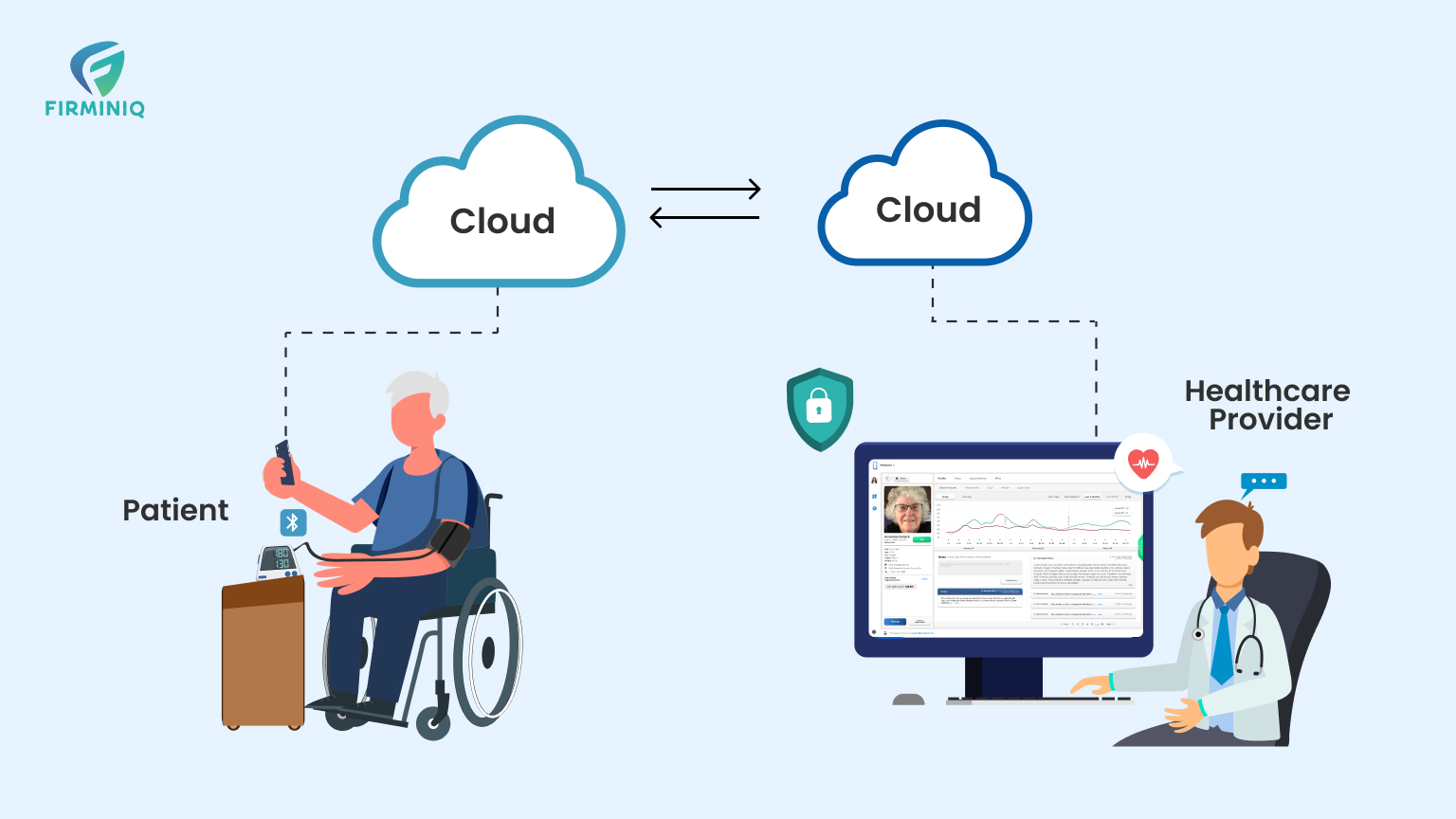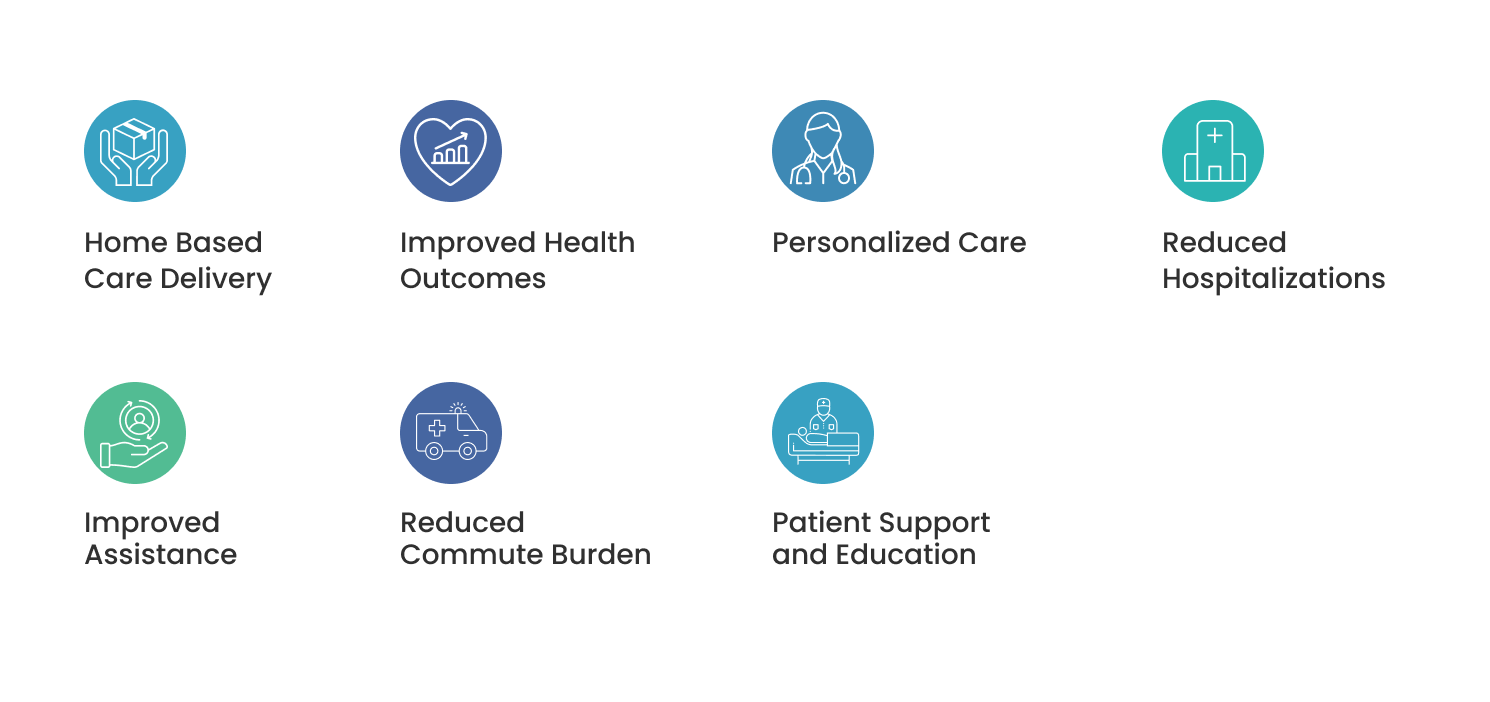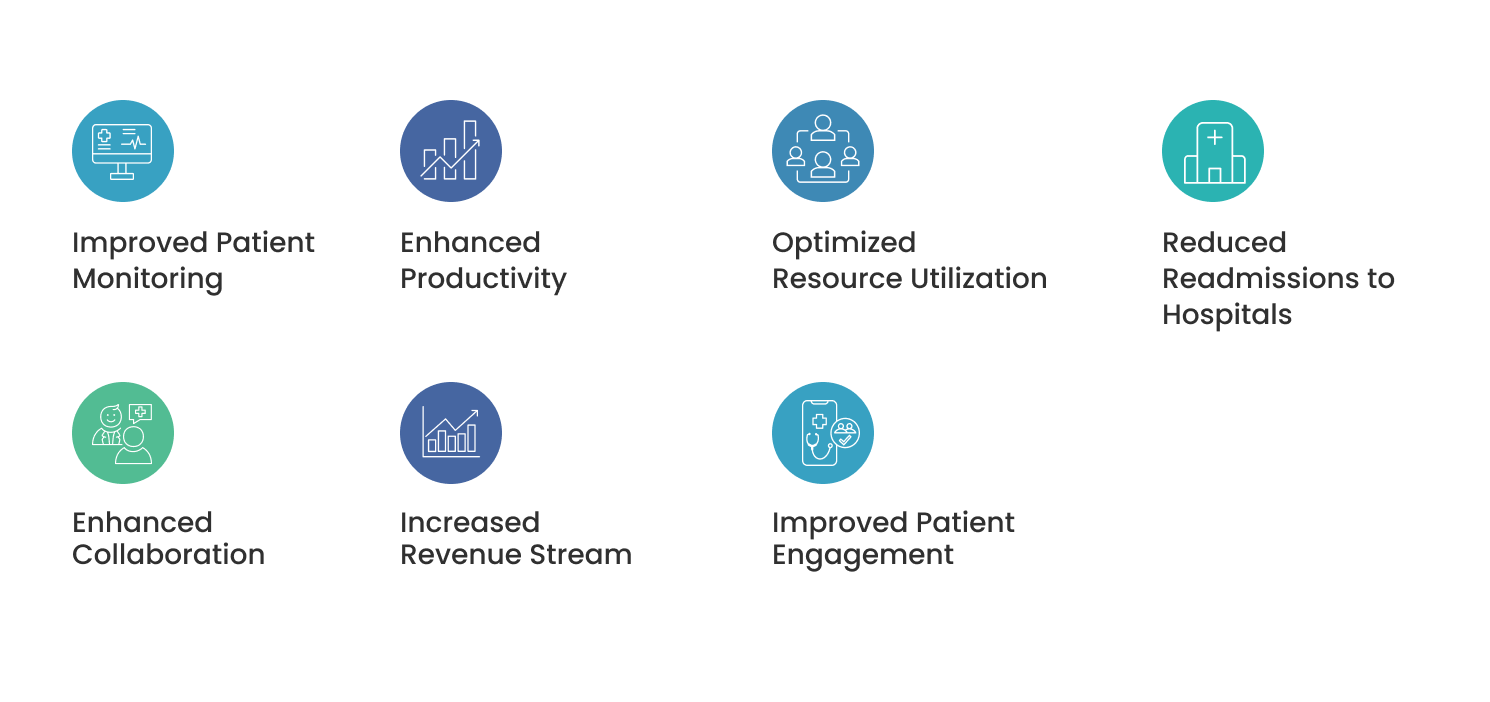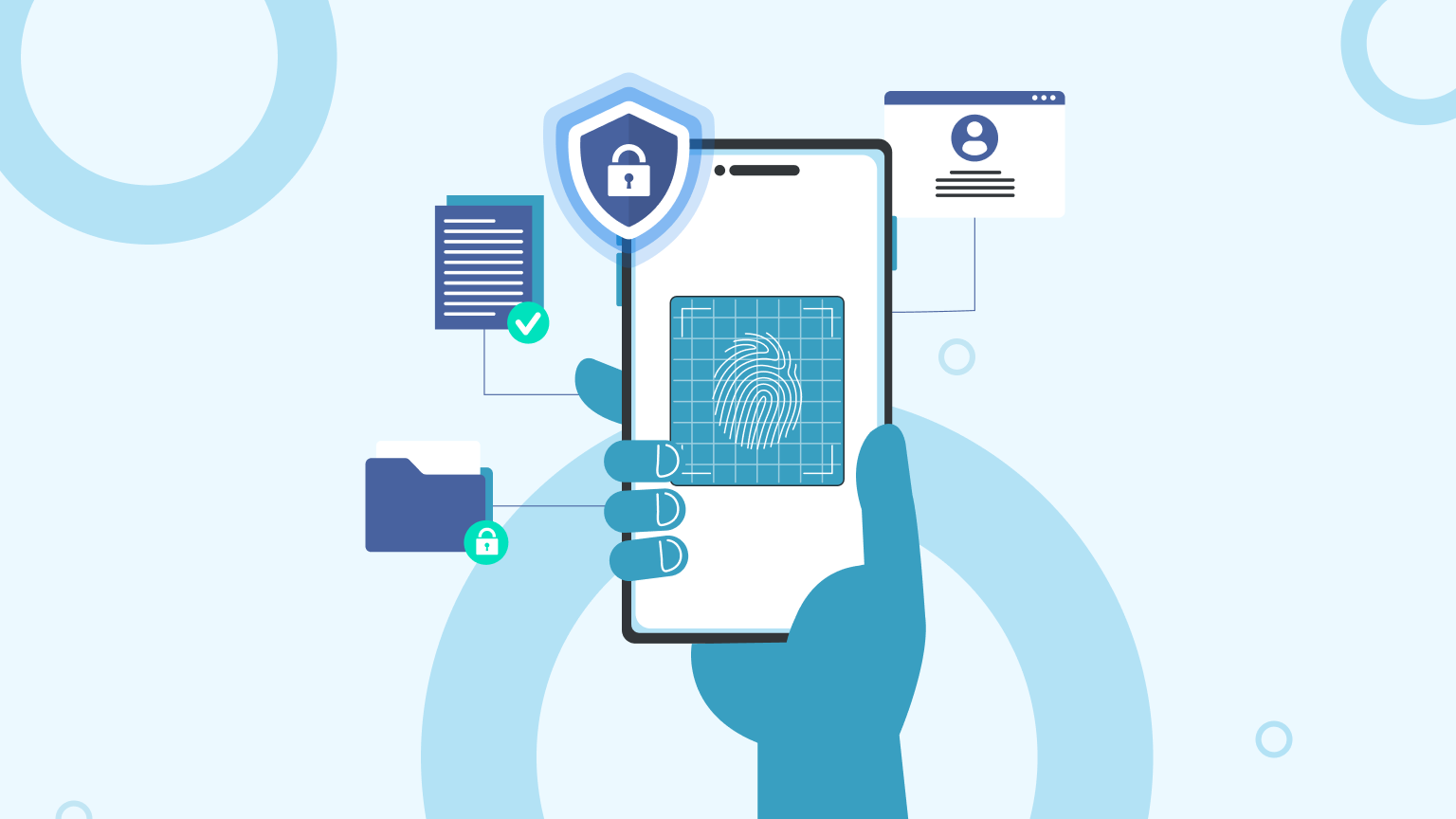Given the tireless dedication of doctors and staff in providing constant patient monitoring, the task of identifying every potential complication or emergency may seem impractical. However, Remote Patient Monitoring (RPM) has emerged as a transformative solution, offering significant benefits to all involved stakeholders. By employing advanced technologies such as wearables and sensors for continuous health monitoring and analysis, RPM enables proactive intervention and personalized care.
Highlighting its importance, “The global remote patient monitoring system market size was estimated at USD 5.2 billion in 2023, with an expected compound annual growth rate (CAGR) of 18.6% from 2024 to 2030”, according to Grand View Research
As the RPM system evolves, it is reshaping healthcare delivery norms and presenting numerous advantages for both healthcare providers and patients. Explore the blog to discover these benefits in detail.
Benefits of RPM for Healthcare Providers and Patients
RPM has become one of the invaluable tools, especially after digitalization and offers many benefits to the stakeholders. Let us walk through how healthcare providers and patients are strategically leveraging the benefits RPM offers.
Key Advantages RPM Offers to the Patients
1. Home Based Care Delivery
Ever since the pandemic, the nature of patient care has changed, and they prefer treatment in the comfort of their home. RPM allows healthcare professionals to monitor patient’s conditions remotely, analyze vitals in real time, and tailor plans to individual needs. Patients particularly dealing with serious or chronic conditions can receive treatment more conveniently and it overall boosts patient satisfaction.
Moreover, RPM offers more independence to patients as they can actively participate in their care management, fostering a sense of empowerment and control over their health.
2. Improved Health Outcomes
RPM helps patients improve their healthcare outcomes, as they can seamlessly monitor their health and intervene timely if there are any risks associated. Continuously tracking healthcare metrics allows providers and patients both to detect abnormalities and prevent any sort of complications. It results in reduced hospitalizations, cost-cutting in the long-term enhanced patient outcomes.
“A KLAS Research report surveying 25 healthcare organizations found 38% of healthcare organizations running RPM programs focused on chronic care management reported reduced admissions, while 17% cited cost reductions.”- EMARKETER
3. Personalized Care
RPM facilitates personalized care for patients based on their needs. As healthcare providers have access to the patient’s real-time vitals, they can enable personalized treatment plans that address the patient’s needs and preferences.
Suppose a person suffering from diabetes is getting their glucose level monitored via RPM. If there are any fluctuations in glucose level, healthcare professionals can quickly monitor and adjust the treatment plans as per the needs of the patient.
4. Reduced Hospitalizations
RPM approach uses technology and monitors the patients’ vital and health status via wearable devices, sensors, and other platforms in real-time. Patient condition monitoring in real-time helps detect the changes in patient health early enough before the symptoms arise and offer the required treatment, while reducing hospitalizations.
5. Improved Assistance for patients with Chronic Conditions
As per CDC, 90% of the nation’s $4.1 trillion in annual healthcare expenditures are for people with chronic and mental health conditions. Preventive measures and management strategies for these diseases offer substantial health benefits for the patients.
RPM has proved to be beneficial for patients with chronic conditions as they require continuous monitoring. To know more how chronic conditions can be managed with RPM, read Conquering Chronic Conditions: A Holistic Approach to Management with RPM
6. Reduced Commute Burden
For patients living in rural and remote areas, it is difficult to travel long distances and access healthcare services. In such cases, RPM for the patients reduces the frequent need to visit hospital facilities, saving their time and money.
7. Patient Support and Education
RPM not only enables patients to track their health condition but fosters patient support and education. Using RPM allows patients to leverage RPM. The platform offers medication reminders, and lifestyle modifications, to the patient’s devices. Reminders and adherence tracking features help patients stay on track with their prescribed medications. Patients receive personalized guidance on adopting healthy lifestyle habits, dietary changes, and more as per their condition.
Key Advantages RPM Offers to the Healthcare Providers
1. Improved Patient Monitoring
RPM can offer enhanced patient monitoring for the providers as they can monitor the health status of the patient remotely in real-time, which encourages timely intervention. Continuous data collection and monitoring of vital signs leads to effective management of the patient’s condition.
Also, with these valuable insights into patient trends and patterns, healthcare professionals can offer them personalized care and plans.
2. Enhanced Productivity
With RPM healthcare workflow is revolutionized and data collection is automated. It streamlines the patient monitoring process. RPM is integrated with wearable devices, sensors, and more eliminating the need for data entry manually, reducing the admin burden, reducing errors, and more.
With automation, healthcare professionals can divert their attention towards more critical tasks like patient care and treatment plans.
3. Optimized Resource Utilization
With RPM healthcare providers can prioritize care based on the patient’s need. It helps them allocate resources more efficiently. It is a personalized approach that allows professionals to intervene and allocate resources where there is a need.
For example, with RPM implementation, healthcare providers can identify patients with a higher risk who require more intense monitoring. Continuously monitoring vital signs and health metrics in real-time, RPM allows healthcare teams to detect early warning signs of deterioration and allocate the resources accordingly.
4. Reduced Readmissions to Hospitals
As the healthcare providers can monitor a patient’s condition even after they are discharged, RPM helps prevent complications and identify warning signs. It reduces hospital readmissions and helps patients save costs associated with hospital admission.
5. Enhanced Collaboration
RPM enables seamless and enhanced communication as information sharing is more active among the providers and patients. It helps them make collaborative decisions and coordinate care delivery. Data sharing in real-time allows professionals to work collaboratively and build effective and comprehensive care plans.
6. Increased Revenue Stream
Whether it is virtual consultations, monitoring or taking follow ups, with RPM, healthcare professionals can cover and bill for various interactions. Also, as RPM offers proactive care, chances are no-show by the patients are very less. Patients are adhered to the appointments and there is a consistent flow of revenue.
RPM allows healthcare professionals to leverage reimbursable CPT codes, such as 99458 and 99457. These codes reimburse physicians for their time spent on remote healthcare activities.
7. Improved Patient Engagement
RPM is a valuable differentiator for providing healthcare services and attracting patients who value convenience, proactive care, and remote monitoring. Adopting the care model allows providers to attract, engage, and retain patients.
Benefits For Other Stakeholders
RPM offers many benefits for insurance providers, caregivers, family members of patients and other stakeholders while making healthcare accessible to everyone. With seamless integration of technology, RPM ensures every individual gets the quality care and attention they deserve regardless of their location, socio-economic status, or other circumstances. For more information on how it makes healthcare accessible to everyone, also read,
By preventing costly readmissions and emergency hospital visits, RPM offers an opportunity to improve risk management. The approach enhances patient outcomes and helps save cost for insurance providers as well.
For caregivers and family members, RPM offers peace of mind and support in managing the health and well-being of their loved ones. It fosters transparency and engagement that empowers caregivers to play an active role in a patient’s care journey, leading to better outcomes.
Apart from this, RPM offers enhanced interoperability for stakeholders, enabling seamless exchange of information and collaboration among healthcare providers, patients, and others involved.
Epilogue
Overall, RPM unlocks many opportunities for different stakeholders and is reshaping the landscape of healthcare. From enhanced patient care to provider efficiency, RPM holds the potential to elevate the healthcare system while reducing the costs associated.
As RPM continues to gain widespread adoption, its impact on healthcare continues to become even more noticeable, while paving the way for the future where quality care is delivered. Are you a healthcare organization looking forward to leveraging innovative technology and fostering patient engagement? Let us help you build a custom RPM solution that ensures seamless remote monitoring, proactive intervention, and personalized care delivery. Contact us for more details.









